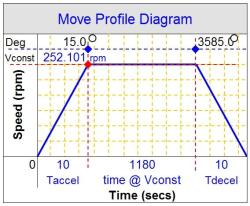Know your Duty Cycles
Published Jul 4, 2013The International Electrotechnical Commission (IEC) has eight classifications for duty cycles to designate a motor's operating conditions.
It's extremely important to know the differences and to note what mode of operation each rating refers to. Establishing the duty cycle of a motor and drive for a given application will help you to save costs.
We take a brief look at the eight classifications and what they mean.
|
S1 |
Continuous duty |
The motor works at a constant load for enough time to reach temperature equilibrium. |
|
S2 |
Short-time duty |
The motor works at a constant load, but not long enough to reach temperature equilibrium. The rest periods are long enough for the motor to reach ambient temperature. |
|
S3 |
Intermittent periodic duty |
Sequential, identical run and rest cycles with constant load. Temperature equilibrium is never reached. Starting current has little effect on temperature rise. |
|
S4 |
Intermittent periodic duty with starting |
Sequential, identical start, run and rest cycles with constant load. Temperature equilibrium is not reached, but starting current affects temperature rise. |
|
S5 |
Intermittent periodic duty with electric braking |
Sequential, identical cycles of starting, running at constant load and running with no load. No rest periods. |
|
S6 |
Continuous operation with intermittent load |
Sequential, identical cycles of running with constant load and running with no load. No rest periods. |
|
S7 |
Continuous operation with electric braking |
Sequential identical cycles of starting, running at constant load and electric braking. No rest periods. |
|
S8 |
Continuous operation with periodic changes in load and speed |
Sequential, identical duty cycles run at constant load and given speed, then run at other constant loads and speeds. No rest periods. |
Some suppliers quote the peak rating of the motor in product type codes, where others use the nominal rating. It is worth checking the technical specification carefully.
We recommend talking to a supplier that can give advice on such matters. If you need high start up torque, but intermittently, some servo drives offer up to 3 or 4 times the nominal current for short periods (such as our ServoONE junior and ARS 2000-FS and SE series), ensuring you get the performance required without paying over the odds.
